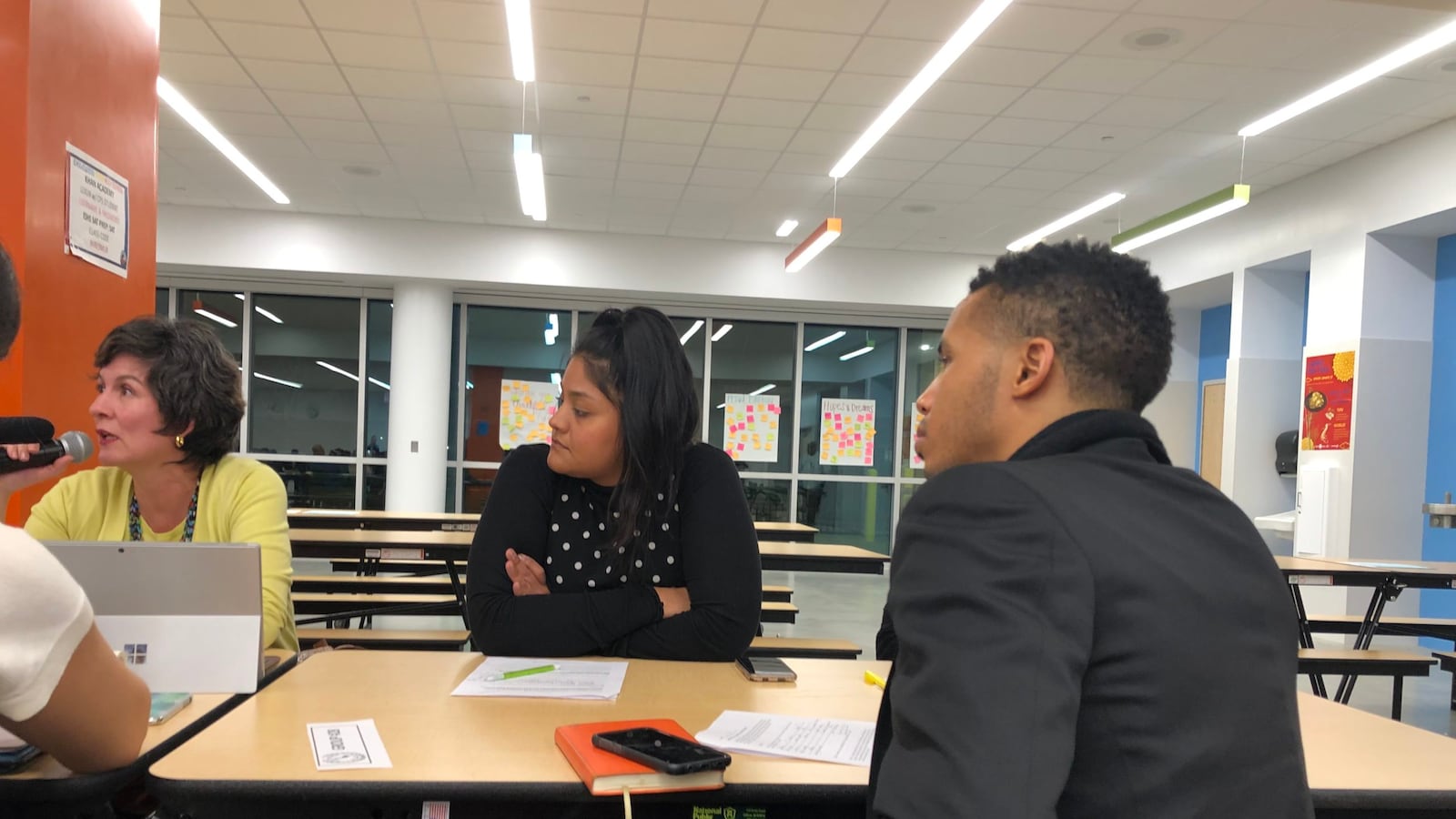Ellen Kennedy gripped the microphone and spoke poignantly about how school ratings put pressure on everyone involved with a school, starting with the principal.
“The struggle is really, really real,” said Kennedy, the principal at Richards Career Academy, a high school in the Back of the Yards neighborhood that moved up from the lowest-rated tier last school year. She was one of about 60 principals, parents, and community members who took part in a school ratings discussion at the new $85 million Englewood STEM High School Monday night. “My school lovingly serves some of the most vulnerable children in this city, yet I’m being measured by the same [ratings] policy as selective enrollment schools. There is something truly disturbing about that.”
School ratings factor heavily into which schools parents choose, and can trigger interventions when they drop past a threshold. They are required by both state and federal law, but school districts have considerable leeway in how they design the ratings.
Critics, including Chicago’s teachers union, have had sharp words about the city’s current five-tiered system, which rolled out in 2014, for being too reliant on test scores and attendance.
In June, Chicago Public Schools introduced revisions to its rating system, and the city’s newly minted school board passed the changes in its members’ first public meeting, despite concerns that the amended ratings would still penalize schools with the highest concentrations of students living in poverty.
Eight months later, the board is reopening the conversation. Exactly what the school board plans to do with what it learns from its meeting isn’t quite clear — the district is also trying to drum up participation in a citywide survey on the topic and said there would be future public discussions — but members said they would weigh what they heard. (School board members also play a prominent role in a new committee that Mayor Lori Lightfoot tasked with revisiting school budgeting. Read more here.)
Amy Rome, a school board member and a former principal and teacher who led the ratings conversation Monday, said that the board was in search of “a way to compare schools that is value-based.”
“There is a historical context for how [Chicago’s ratings policy, known as SQRP] has been used that has really damaged trust in the community, and we need to earn back that trust,” she said.
Bridgitt White, a parent with two children in two differently rated elementary schools, listened with interest. Her daughter attends a test-in classical school on the South Side that is among the city’s top-rated. Her son attends a neighborhood school that is a level lower and has seen cuts to arts and its library. He lost teachers midyear in second and third grade.
For White, the conversation about school ratings can’t be isolated from discussions of how much money or attention some schools receive compared to others. She would like to see the city draft a ratings policy that doesn’t rely so much on standardized test scores in reading and math (which currently count for much of a school’s score, along with attendance), but also the availability of arts programs, technology, and social emotional investments for students. “We’ve lost our arts, our libraries — I’m tired of my son saying school is ‘blah’ to him because he has no sports, no extra activities outside of academics. What kind of environment is that for a child?”
Attendees brainstormed in small groups about what “quality” should look like. The list of suggestions included everything from a school’s diversity of programming — such as arts and sports — to the availability of counseling and psychological services, to teacher diversity, to more qualitative metrics, such as how welcoming a school feels to families, or its cleanliness.
Jeff Broom, the director of school quality measurement and research, said that the district would hold future meetings and that what it learned would inform more “technical conversations.”
In November the district shared an open survey with the public and has so far collected a little over 4,000 responses, with teachers making up 41% of respondents (parents were only around 24%) and 44% of survey takers identifying as white. Soliciting broader representation and feedback is a challenge, Broom said.
Several attendees suggested the district take a more school-by-school approach with engagement and try to reach a broader set of parents by working through neighborhood groups and churches, instead of scheduling more districtwide meetings.
Principal Stacy Stewart of Belmont-Cragin Elementary said the meeting was a step in the right direction, but challenged leaders to foster more conversations about the “whole child, whole school model.”
“How do we leverage assets in our community so our children get the supports they need?” she asked. “Our city needs resiliency. We can’t be victims of circumstance. We have to bounce back.”

